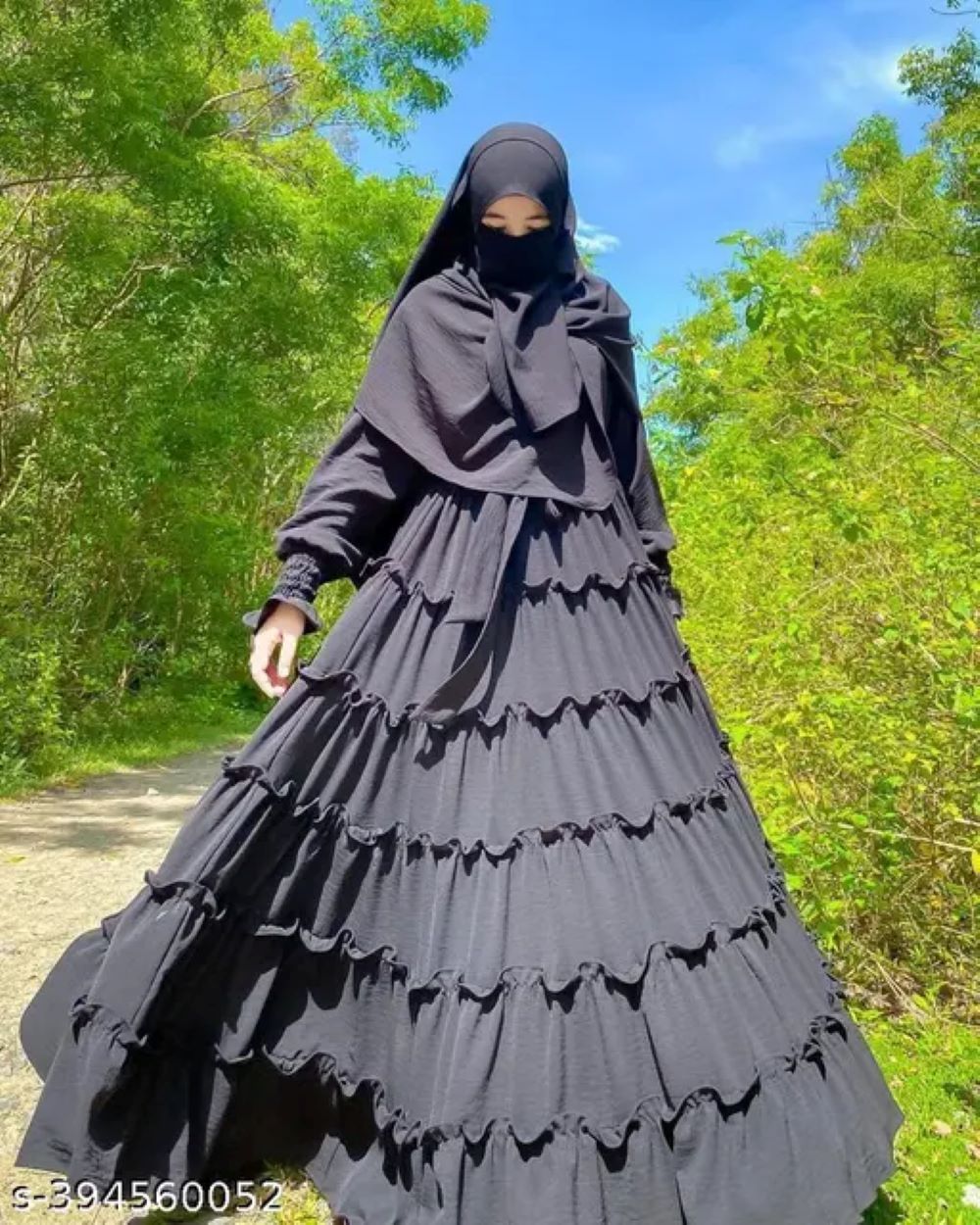Introduction
Burka is a garment worn by some women, especially in certain Islamic cultures, as a symbol of modesty and religious faith. While the burka is often associated with the Islamic religion, its significance and perception vary across different societies.
In this article, we’ll delve into the origins, meanings, and controversies surrounding the burka, as well as its role in modern fashion and faith.
What is a Burka?
The burka is a full-body covering that covers a woman from head to toe, leaving only a small mesh screen for the eyes. The garment is traditionally worn in some countries like Afghanistan and parts of Pakistan, especially among conservative Muslim communities.
The burka serves as a symbol of modesty and is often seen as a requirement for women to maintain their privacy and dignity in public.
Historical Roots of the Burka

The history of the burka dates back centuries, with roots in the Middle East and Central Asia. While it has been associated with Islam, its origins are not entirely religious.
Some historians argue that the burka was worn in ancient societies as a sign of status and protection from the harsh environment. Over time, the burka became linked to religious practices and social norms, particularly in countries where Islamic law (Sharia) is followed.
The Burka in Islamic Culture
In Islamic teachings, modesty is emphasized for both men and women. The burka is one of the garments that some women wear to observe these values.
However, it’s important to note that wearing the burka is not mandatory for all Muslim women. While some interpret Islamic teachings to require full-body covering, others see modesty as a personal choice. Thus, the burka’s role in Islam is widely debated and varies by region and individual beliefs.
Burka vs. Other Modest Clothing

The burka is often confused with other types of modest clothing, such as the hijab or niqab. While all of these garments promote modesty, they differ in coverage. The hijab typically covers the hair, neck, and sometimes the shoulders, but leaves the face uncovered.
The niqab, on the other hand, covers the face, leaving only the eyes exposed. The burka is the most covering of these, enveloping the entire body, including the face, in a full-body garment.
Fashion and the Burka: A Symbol of Style?
In some parts of the world, the burka has become more than just a religious symbol; it’s also a fashion statement. Fashion designers have created modern versions of the burka, incorporating different fabrics, colors, and styles to suit various tastes.
These fashion-forward burkas have gained popularity among some Muslim women who want to express their personality and style while adhering to modesty requirements.
However, this trend is not universal. In conservative societies, the burka is still seen as a serious symbol of faith and modesty rather than a fashion accessory.
This clash between tradition and modernity has led to debates on whether the burka should be viewed as a tool of oppression or as an empowered choice for women who wish to express their faith.
Burka and Feminism: Empowerment or Oppression?
One of the most controversial aspects of the burka is its association with women’s rights and feminism. Some argue that the burka is a tool of oppression, used to control women’s appearance and freedom. These critics argue that the burka restricts women’s ability to participate in society, work, or express themselves freely.
On the other hand, many women who wear the burka argue that it represents empowerment, not oppression. For these women, the burka allows them to control how they are perceived, emphasizing their inner qualities over their physical appearance.
They see the burka as a choice, not an imposition, and believe it allows them to maintain dignity and privacy in a society that often objectifies women.
The Burka Ban: Legal and Social Implications

In recent years, several countries have enacted laws banning the burka in public spaces. Countries like France, Belgium, and some parts of Germany have cited security concerns and the need for national unity as reasons for the ban.
Critics of these laws argue that they infringe on religious freedom and individual rights, while proponents claim that such bans promote integration and safety.
The debate over the burka ban is a complex one, touching on issues of freedom of expression, religion, and security. While some people see the burka as a symbol of oppression, others view the banning of the burka as an attack on cultural and religious practices.
Burka in the Western World
The presence of the burka in Western countries has raised numerous questions about integration, identity, and multiculturalism. In countries like the United States and the United Kingdom, the burka is a subject of ongoing debate. Some argue that the burka represents a clash of values, while others believe that Muslim women should have the freedom to wear what they choose without judgment.
In the West, the burka is often viewed with suspicion or even fear, largely due to misunderstandings about its cultural and religious significance.
As a result, Muslim women who wear the burka in these societies sometimes face discrimination or hostility, making it difficult for them to feel accepted and integrated.
The Burka and Religious Freedom
For many women who wear the burka, it is an important expression of their religious identity. The choice to wear the burka can be deeply personal, representing their devotion to their faith and a desire to uphold religious principles. As such, the burka has become an important symbol of religious freedom for some Muslim women, who see their right to wear it as a fundamental part of their personal autonomy.
Religious freedom is a key issue in the debate over the burka, as some argue that wearing it should be a personal choice, while others believe that it may be a symbol of forced submission. The issue often intersects with discussions about women’s rights, freedom of expression, and cultural diversity.
The Future of the Burka: Changing Attitudes
As societies evolve and more Muslim women enter the workforce, education, and public life, the role of the burka is likely to change. In some regions, the burka may become less common as more women choose to wear other forms of modest clothing, like the hijab.
However, in other areas, the burka may continue to be an important symbol of faith and identity. One thing is clear: the burka remains a highly debated garment that evokes strong feelings and differing opinions.
Whether viewed as a symbol of oppression or a statement of faith, the burka is deeply intertwined with cultural, religious, and social dynamics, and its future will depend on how societies continue to evolve and address issues of gender, religion, and freedom.
Conclusion

The burka is more than just a piece of clothing; it is a complex symbol of faith, modesty, identity, and controversy. Whether worn as an expression of religious devotion or as a political statement, it continues to spark debates around the world.
Its significance and the perception of it will likely continue to evolve as societies grapple with issues of cultural diversity, individual freedom, and gender equality.
What is clear, however, is that the burka will remain an important symbol for many women, representing both their personal beliefs and their cultural heritage.





